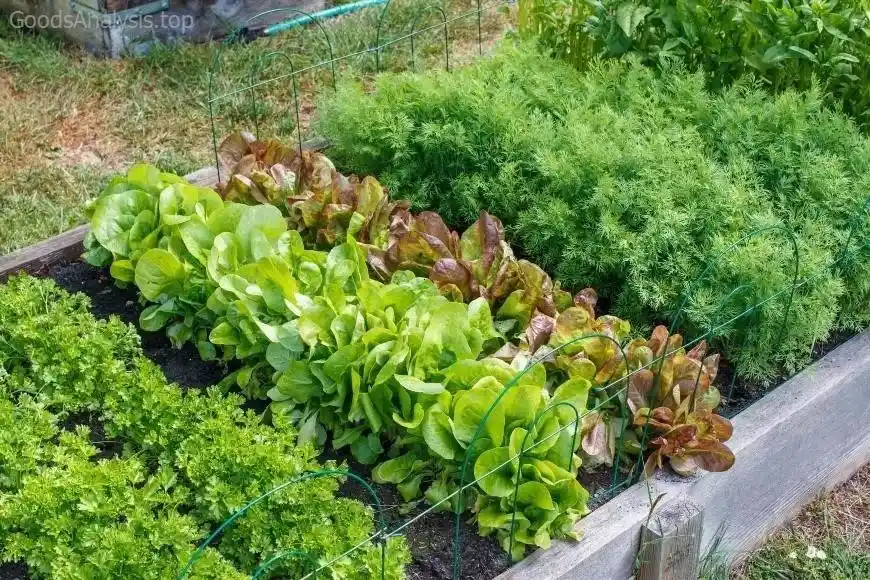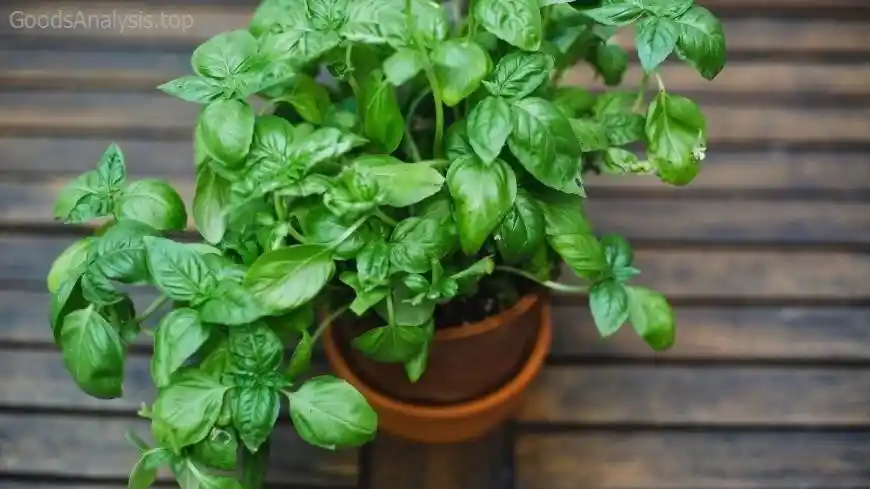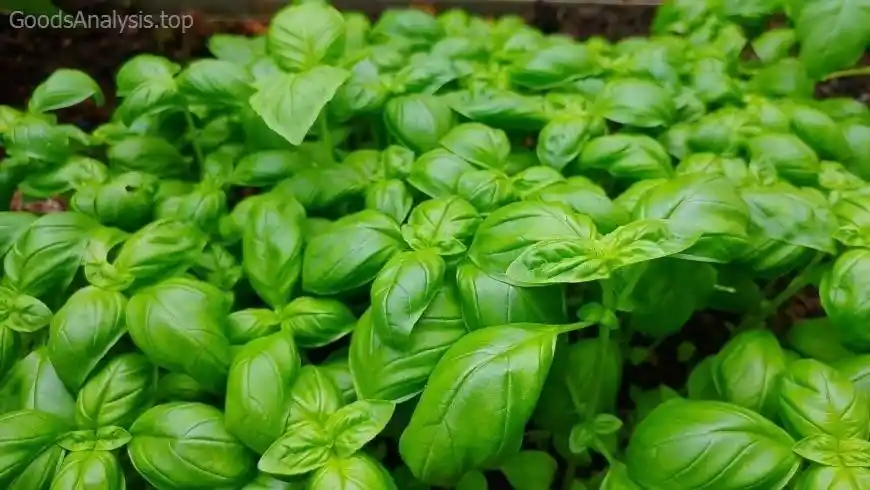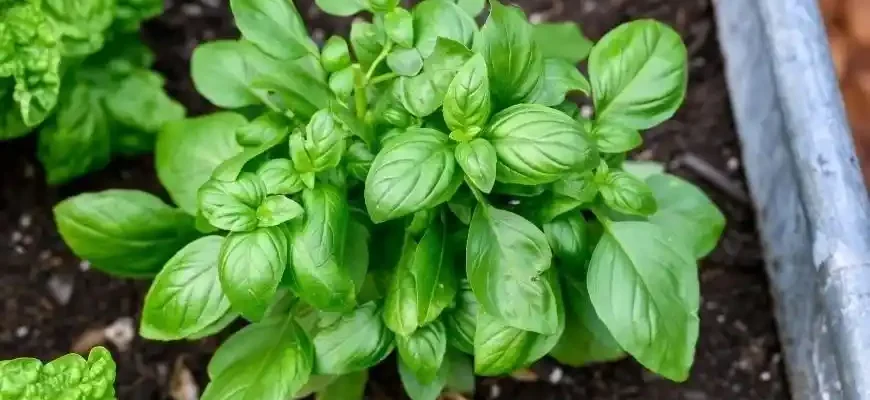If you’re here, you’re probably wondering how to grow basil outdoors, and I’m happy to share everything I’ve learned over the years. I’ve been cultivating basil for decades, both for personal use and as part of a small-scale herb garden, so you can trust me when I say that it’s easier than you think — but with a few caveats. Nothing is ever 100% foolproof, but with the right care, your basil plant will thrive and give you lush leaves to use in everything from pasta dishes to refreshing summer drinks. So let’s dive in!
Why Grow Basil Outdoors?
Basil is a herb that loves the sun, warmth, and a little bit of attention. While it can be grown indoors, there’s something special about having it grow outside, where it can spread its roots and truly flourish. Plus, outdoor basil gives you a natural supply of fresh leaves, and you’ll get that lovely smell every time you walk by. It’s a win-win.
That said, it’s not all sunshine and rainbows. Growing basil outdoors requires the right environment and care. Here’s what you need to know:
1. Choosing the Right Location
Basil is a sun-loving plant, so finding a sunny spot in your garden or on your balcony is key. Ideally, basil needs at least 6 hours of direct sunlight per day. Without enough sun, your plant may become leggy, producing fewer leaves and weaker stems.
If you live in a region with very hot summers, some afternoon shade can actually benefit your basil, preventing it from wilting or burning under intense heat. However, in cooler climates, a sunny spot is non-negotiable.
2. Soil and Drainage: Basil’s Love Affair with Good Soil
Basil doesn’t ask for much in terms of soil—just make sure it’s well-draining and rich in organic matter. Sandy or loamy soils are ideal, but if your soil is heavy or clay-like, amend it with compost or well-rotted manure. This will help with drainage and improve nutrient levels.
One common mistake I see is planting basil in soil that’s too wet or that doesn’t drain properly. This can lead to root rot, a nasty issue that can kill your plant. So, if your garden is naturally clay-heavy, consider using raised beds or containers for your basil. Trust me, this is one of the best ways to avoid soggy roots.

3. Planting and Spacing
Plant basil outdoors after the last frost of the season. Basil is extremely sensitive to cold, and even a light frost can damage or kill your plants. In temperate regions, this usually means planting around late spring or early summer, depending on your local climate.
When you plant basil, space your plants about 12-18 inches apart. Basil grows into a bushy, sprawling plant, so they need enough room to spread their leaves without crowding each other. Giving them enough space also promotes good air circulation, which helps prevent diseases like powdery mildew.
4. Watering: The Right Balance
Basil likes moist soil, but it hates soggy feet. This means you’ll need to water your basil consistently, but not excessively. Water when the top inch of soil feels dry to the touch. It’s better to water deeply and less frequently than to give your plant a little drink every day. Deep watering encourages the roots to grow deeper into the soil, which helps the plant become stronger and more drought-tolerant.
Be careful not to splash water onto the leaves when watering. Wet leaves can attract fungal diseases, so it’s always best to water at the base of the plant.
5. Fertilizing: A Little Goes a Long Way
Basil isn’t a heavy feeder, but it does appreciate a little help. A balanced, all-purpose fertilizer or organic compost applied once a month should be enough. Over-fertilizing can lead to lush foliage but weak stems, and too much nitrogen can also affect the flavor of the leaves.
If you’re growing basil in containers, you’ll need to fertilize more regularly, as nutrients get washed out more quickly in pots. A slow-release organic fertilizer is a good choice here.

6. Pruning and Harvesting: Don’t Be Afraid to Trim
Pruning is essential for a healthy basil plant. Regularly pinch off the tips of the stems to encourage branching and more leaf production. This helps the plant grow bushier, rather than tall and leggy, which also improves the flavor profile of the leaves.
When harvesting, only take a few leaves at a time, and avoid removing more than one-third of the plant at once. This ensures your basil continues to grow. If you need a lot of basil for a recipe, consider harvesting larger sections of the plant and leaving the rest to grow.
7. Common Issues and How to Solve Them
No garden is without its challenges, and basil is no exception. Here are a few common issues you might face:
- Pests: Aphids, whiteflies, and caterpillars love basil. To deal with them, consider using natural predators like ladybugs or spraying the plants with insecticidal soap. Neem oil can also help deter pests without harming the plant.
- Diseases: Basil can fall victim to fungal diseases like downy mildew or fusarium wilt. To prevent this, ensure good air circulation and avoid overhead watering. If you notice any signs of disease, remove affected leaves immediately to keep it from spreading.
- Bolting: If your basil plant suddenly shoots up with flower spikes, it’s bolting. While basil flowers are edible, once the plant bolts, the leaves can turn bitter. To prevent bolting, keep basil well-watered and in full sun. If you see flower stalks, pinch them off to redirect energy back to the leaves.
8. Climate Considerations
As a warm-weather herb, basil grows best in USDA Hardiness Zones 10-11, but it can be grown as an annual in almost any climate. If you live in a cooler area, you may want to grow basil in pots, so you can move them inside during cold weather. Basil is highly sensitive to frost, and even a light touch of cold can kill it.

If you’re in a very hot region, remember that basil may require some afternoon shade to protect it from the sun’s intense rays. A simple garden mesh or shade cloth can do wonders.
Opinions on Growing Basil Outdoors
Here’s what a few gardeners from different backgrounds have to say about growing basil outdoors:
- Sarah, 34, USA: “I love having basil in my garden! It’s so easy to grow, and I love using it fresh for my salads and pasta. I’ve had some issues with aphids, but I just spray with neem oil, and it takes care of them.”
- Raj, 50, India: “Basil in my garden is an essential herb for making tea and adding flavor to curries. I’ve found that it grows best in the hot, humid climate where I live, but I always make sure to water deeply and give it plenty of sun.”
- Maria, 62, Spain: “I’ve been growing basil in my kitchen garden for years, and it’s been a bit of a challenge in the hotter months. I’ve learned to provide some shade during the afternoon and to keep an eye out for diseases, but it’s well worth the effort.”
- Tarek, 45, Egypt: “Basil thrives in the warm Egyptian climate. The key here is managing the water correctly—basically, not too much! Overwatering is the worst mistake I made in my first year.”
- Liu, 27, China: “I started growing basil on my balcony in a small container. It’s easy to take care of as long as I remember to trim it regularly. The biggest challenge I’ve faced is making sure I don’t let it dry out too much in the summer heat.”
Conclusion
Growing basil outdoors isn’t difficult, but it does require attention to detail. With the right care, you’ll have a steady supply of fresh, fragrant leaves to use in your cooking. Remember to choose a sunny spot, use well-draining soil, and water wisely. Keep an eye out for pests and diseases, and don’t be afraid to trim your plant to encourage new growth.
Gardening, like life, is about trial and error, but with a little patience, you’ll be harvesting basil like a pro in no time. Enjoy your gardening adventures, and feel free to share your own experiences or ask questions. Happy growing!









